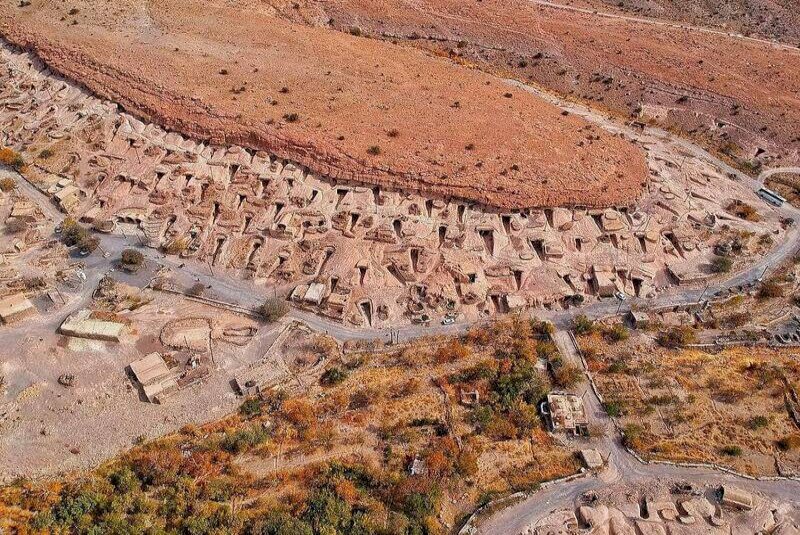Anthropology museum, research center under construction in UNESCO-tagged Maymand

TEHRAN –An anthropology museum as well as a research center are under construction in the UNESCO-registered Maymand, a southeastern Iranian village of troglodytes.
A budget of 20 billion rials ($476,000 at the official rate of 42,000 rials) has been allocated to the projects, Reza Riahian, the director of the World Heritage site, said on Monday.
The cultural landscape of Maymand was named a UNESCO World Heritage in 2015 as an exemplar system of manmade cave dwelling that is believed to be practiced in the region to cope with its harsh climate.
The museum and research center are being built and localized based on the village’s site plan, the official added.
The construction of the research center, which includes a laboratory, conference hall, meeting room, library, technical office, and documentation center, is complete by 60 percent, while the museum is complete by 70 percent, he explained.
He also noted that the museum is planned to showcase and introduce the lifestyle, traditions, and customs of the residents of Meymand as well as their handicrafts, and agricultural and livestock tools and products.
Maymand is situated near Shahr-e Babak in the southeastern Kerman Province. Its self-contained, semi-arid area is sprawled at the end of a south-facing valley at the southern extremity of Iran’s central mountains.
Sandwiched between a desert and a mountain, Maymand has cold winters and exceedingly hot summers yet abundant with mulberry and blackberry trees. Living conditions in the village are considered as severe due to the aridity of the land, high temperature in the summertime, and very cold winters.
It is believed to be one of human’s primary residences in the country as its history stretches far back in time to about 10,000 years ago. Some of its natural and manmade caves are still used for housing and shelter.
The houses in the continually inhabited village are carved like caverns inside the mountain. The internal spaces have corridors and pillars featuring a rural architecture. The houses are situated in four or five stories, one on top of the other.
Narratives say the early residents did not use hammer and chisel, but rather a type of local, pointed stone that was hard enough to carve images onto the rocks. This method of carving is still practiced in the region. Some of the stone engravings in the village date back to 10,000 years ago.
The majority of inhabitants are semi-nomadic shepherds. They raise their animals on mountain pastures, living in temporary settlements in spring and autumn. The community has a strong bond with the natural environment that is expressed in social practices, cultural ceremonies, and religious beliefs.
The local dialect contains words from the ancient Sassanid and Pahlavi languages. The dialect has been barely changed due to the remoteness of the village. The area is also home to various animals such as snakes, lizards, hedgehogs, deer, leopards, wolves, foxes, and also birds of prey.
Few seasonal springs around the village contribute to the flourishing of agriculture in the area. In such an arid climate, residents have to collect every drop of water to make a living as their ancestors did.
ABU/AFM
Leave a Comment